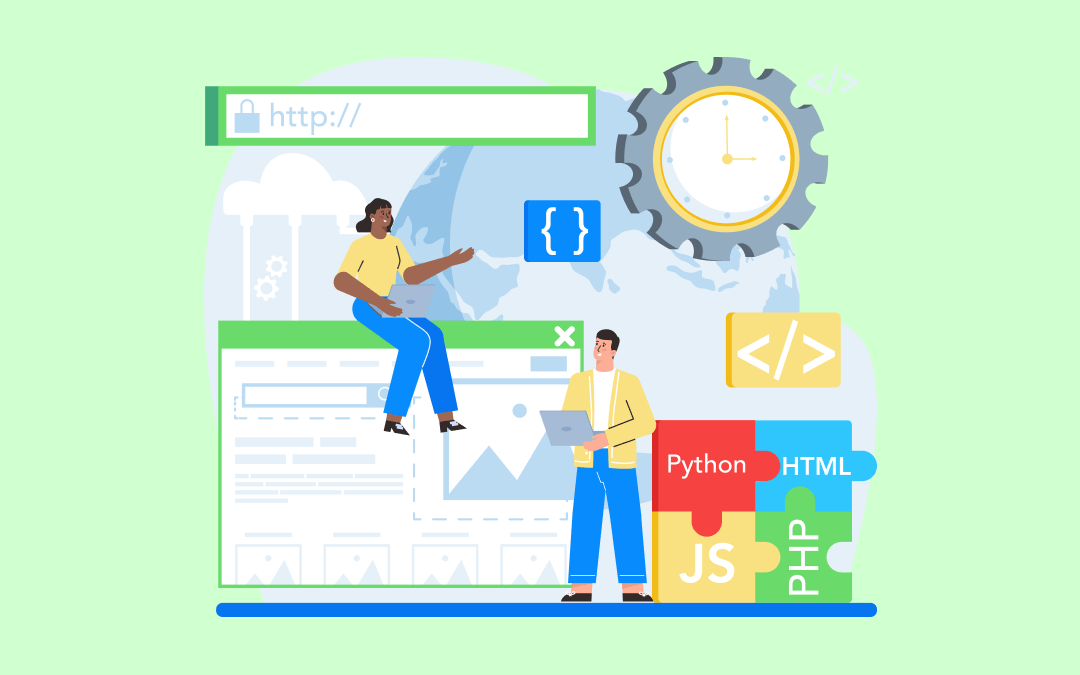According to the US Bureau of Labour Statistics, the demand for front-end developers is likely to grow by 23% from 2021 to 2031. And why not? A skilled front-end developer not only enhances the appeal of your website but also ensures its functionality. They play a crucial role in improving the user interface of a webpage. This improvement can drive the conversation rates by 200%.
Let us first understand what front-end web development is. Front-end web development is everything visible to the end user, from images to layouts, responsive design, and much more.
The front-end developer works on these aspects to ensure the maximum efficiency of your website. However, with the help of some web tools, a developer can easily do their work.
So, let’s continue reading about some of the best front-end web development tools.
Chrome Development Tools
Chrome Development Tools are one of the most popular and trusted web development tools, built directly into the Google Chrome Browser.
These tools are helpful in editing pages and diagnosing problems. This can be incredibly useful when building a website, making the process more efficient and faster.
DevTools are highly beneficial and easily accessible. They allow you to edit codes and measure your page’s performance as well.
Gulp and Grunt
Front-end web developers are responsible for a variety of tasks like compressing images, code making, and more. These tasks can be monotonous and time-consuming.
Gulp and Grunt help automate such tasks. They make these tasks precise and effortless. These tools are designed to reduce the workload of front-end web developers. And are known for their speed and easily understandable codes.
Bootstrap
Bootstrap is one of the most preferred tools for beginners as well as professional developers.
Bootstrap offers pre-defined code snippets in Java, HTML, and CSS, helping developers save time and avoid repetitive work. It comes with a predefined grid system, so developers don’t have to waste their time making grid codes. Further, you get a variety of template designs with Bootstrap.
The web tool aims to allow developers to build websites easily without the need to struggle with basic commands.
jQuery
jQuery is another web tool with a built-in Javascript library. The core purpose of the tool is to help developers ease their tasks with Javascript codes.
With jQuery, you don’t need to write multiple long codes. Rather, it ensures to combine all the common tasks and serves them with just a few lines of code. It also has other features like HTML/DOM manipulation, CSS manipulation, HTML event methods, AJAX, and more.
jQuery ensures you don’t waste all your time writing code, but rather, focus on performing tasks efficiently.
Visual Studio Code
Visual Studio Code is a powerful web development tool designed with code-editing features. VS Code enhances users’ coding abilities. Its customized keyboard allows for easy code navigation.
The best part about the tools is their compatibility with different coding languages. Further, its built-in IntelliSense code completion features also help with incomplete codes. You also get an interactive debugger with Visual Studio Code that can be helpful with source codes, inspect variables, and more.
Conclusion
The front end is the connecting link between the website’s visual appeal and its back-end features like content management, work, etc. The smoother the front end is, the better the user experience. Thus, developers put a lot of time and energy into improving the front end. With front-end dev tools, your job can be made more convenient.
These tools can improve your productivity and speed up the whole design process. However, it is important to understand your needs and choose your best tools based on them.
I hope this blog helps you gain insights into some productive tools. Elevate your web projects with Ralecon!”

